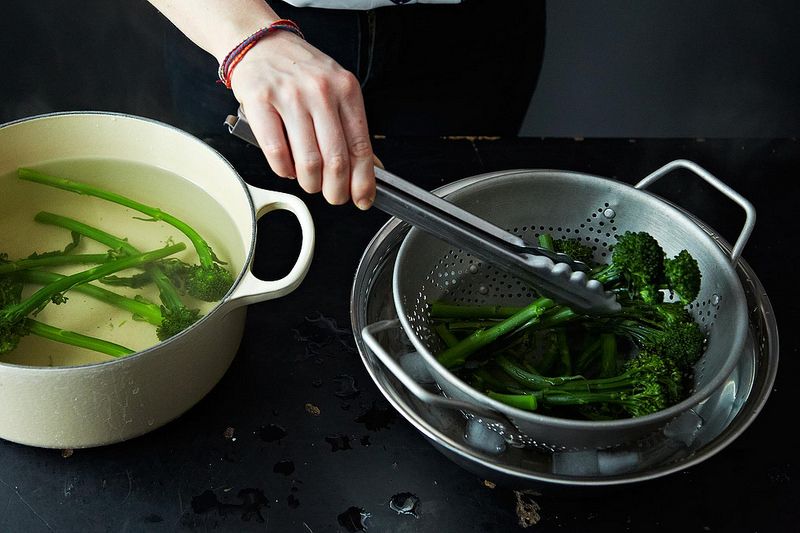Popular on Food52
Continue After Advertisement
8 Comments
Susie W.
June 22, 2015
I go by the advice of Marcella Hazan and Jeremy Tower. Unless I'm preparing a batch of vegetables for future use, I don't shock. When the green beans, broccoli, etc. start to lose the bright green look, I dip them out with a spider and set them aside. If you're going to serve raw vegetables, that's one thing, but I like my cooked vegetables to be actually cooked and not have that grassy vegetal flavor.
Seth C.
June 22, 2015
I find it depends entirely on the meal I'm preparing but as a whole plan to undercook slightly and allow carry over heat to finish the job avoiding the need to use cold water at all regardless of cooking method. I'm not really a fan of boiling vegetables as whole though.
Mark S.
June 22, 2015
I dip them in boiling water for a moment, then tell them their entire family has just been killed in a car crash.
Alicia
June 22, 2015
For green beans heading for a Nicoise salad, run them under cold water. For green beans going into any other salad, I agree with witloof, dry them, and pour dressing over them immediately, as they absorb it beautifully. Carrots heading for a crudite, absolutely blanch and run under cold water or put in the freezer for a few.
witloof
June 21, 2015
There is a recipe for green beans in Cooking For Mister Latte where Amanda has you drying them on a tea towel before dressing them while still warm. I like that method! The beans retain their flavor and absorb the dressing better.
Nga
June 20, 2015
I find that when I do not overcook my vegetables, I do not need to blanch them. I just run them under cold water to stop the heat from continuing cooking. I just boil my vegetables for 3 minutes, turn off the heat then let them cook for another minute or two before draining them. I also do not put salt so I can save the water to make broth or drink it instead of plain water. I find the water that I cook corn or beets are the best. They are naturally sweet.


See what other Food52 readers are saying.